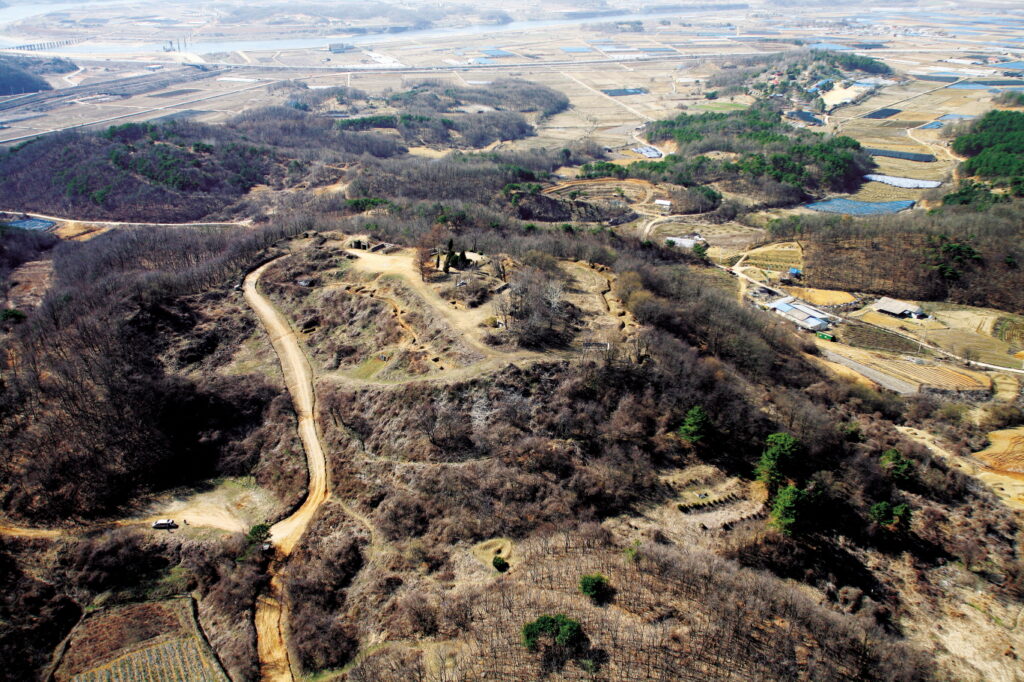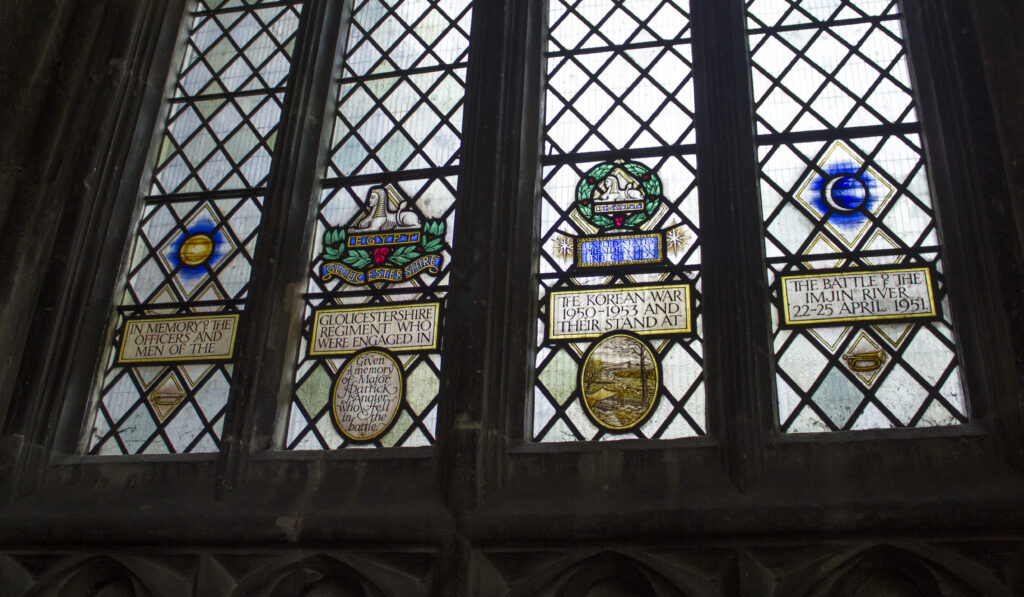Seventy Years of Not Forgetting the Imjin Fallen
Dr. Guy Puzey (University of Edinburgh)
Twenty-two countries contributed military and humanitarian forces to the United Nations Command (UNC) during the Korean War. In practically all of those countries except South Korea itself, however, this is largely a forgotten conflict, to the extent that ‘the term “forgotten war” is synonymous with Korea in Anglophone culture’ (Huxford 2006: 196). It is certainly not afforded much space in the dominant national historical narratives of the European states that took part, including the United Kingdom. For the people of Korea, though, it is undoubtedly hard to forget the distress and destruction of the war, or the separations it brought, and there are indeed some beyond the shores of Korea for whom memories of the war and its wide-ranging impact are ever present. This applies not least to the Korean diaspora, but also to the remaining foreign veterans who survived, their families, and the families of those who never returned.
The final resting place of identified foreign UNC personnel who were killed in Korea depends on nationality. Repatriations were the norm for United States forces and several other countries, but others, including the UK, opted for most of their fallen to be buried at Busan, in what is the world’s only UN cemetery. Still, many who were killed or presumed killed in Korea have no known grave, including my maternal grandfather, Major Patrick A. Angier, who was killed on 23 April 1951 in the Battle of the Imjin River. That battle was, to this day, the British forces’ biggest loss of life in a single battle since the Second World War. Those killed, wounded, or taken prisoner over three days amounted to over one thousand British and Belgian troops of the 29th Infantry Brigade (MacKenzie 2013: 189), and, according to recent estimates, between six and seven thousand Chinese troops of the 63rd Army (Salmon 2009: 260).
Patrick’s parents lost all three of their children: their first son to the influenza pandemic in 1919, their youngest in aerial combat over Germany in 1945, and finally Patrick in Korea. An entire generation was lost, but while many of those killed in Korea were too young to have families of their own, Patrick was survived by a wife and three children, the youngest of whom was only a few months old when the 1st Battalion Gloucestershire Regiment set sail from Southampton in October 1950 on HMT Empire Windrush.
The tragic experiences of this lost generation are far from unique, and yet if we forget the past, or fail to come to terms with it, we struggle to learn whatever lessons it might hold. How do we strive to remember and learn from those who died so far away from home, especially against the tide of forgetting associated with the Korean War? Memory seen through bereavement is a complex phenomenon to chart, not least when rooted in the social and cultural background of a family living in England in the 1950s and 1960s, where ‘[i]t is difficult to appreciate today how widespread and deep-rooted was the ignorance, silence, and embarrassment about grief […], and how pervasive the advice to the bereaved to keep busy and cheerful and to move on’ (Jalland 2010: 235). Still, the typical international portrayal of the Korean War as ‘forgotten’ may instil an additional sense of obligation on families to take practical steps to remember its impact, not least since the experiences of the UNC in this war can also serve to demonstrate why, as one veteran put it, ‘[t]he countries of the world really must learn to live together without fighting’ (Younger 2004: 220).

Jungseongsan (중성산), or Castle Hill, location of Chiljungseong (칠중성) fortress. Photograph by Cultural Heritage Administration, Korea Open Government Licence BY-NC-ND.
Commemorative sites give some impressions of how the past is remembered. Even without a grave to visit, there are sites in Korea that have significance for our family and others. Names for battlefield features and memorials have emerged in English that may be quite different from the Korean names. Patrick’s company, A Company, were defending a hill known in Korean as Jungseongsan (중성산). The hill’s strategic location overlooking the Imjin and near the entrance to a valley on a key route to Seoul had long made it a defensive site. The archaeological remains of the Chiljungseong (칠중성) fortress testify to the site’s role in many battles dating back more than a millennium to the Three Kingdoms period, and military maps in use during the Korean War marked the location as a ‘Castle site’ (AMS Map Sheet L751, ref. 175033), inspiring the English name Castle Hill (캐슬 언덕). Of the men that were on Castle Hill at the start of the battle seventy years ago, every single one was either killed, wounded, or taken prisoner. In 1996, my grandmother visited this place, laid a red rose on the site, and read a prayer.
Other locations associated with the battle have taken on names associated with the Glosters, as the Gloucestershire Regiment was known. Gloucester Bridge (글로스터 교) can be found at the site where Patrick was most likely laid to rest immediately after his death, which is in the recently rededicated Gloster Hill Memorial Park (영국군 설마리 전투 추모공원, more literally ‘British Army Battle of Seolma-ri Memorial Park’). In 2016, a new suspension footbridge on the nearby Mount Gamaksan was given the secondary name The Gloucester Heroes Bridge (글로스터 영웅의 다리).

Scottish Korean War Memorial, West Lothian. Photograph by Guy Puzey, 2017.
As for memorials closer to home, in London there is a Korean War memorial plaque in St Paul’s Cathedral, and an official public Korean War memorial was finally unveiled in Victoria Embankment Gardens in 2014. Significantly, this new memorial was not funded by UK authorities, but by the Republic of Korea and by private donations. In a peaceful location between Bathgate and Linlithgow is the elegant Scottish Korean War Memorial, the result of veterans’ initiative, donations from the public, and contributions from local councils. A Korean-style shrine, set between grass mounds in the shape of the Taegeuk, gives shelter to panels listing the names of all those killed, with trees planted for every single British operational death in Korea. In Gloucester, once home to the Gloucestershire Regiment, a local military base is named Imjin Barracks, and a path by the docks has been named Paju Walk to mark the link with the South Korean municipality where the battle site is located. Indeed, these more official national or community acts of commemoration often highlight cultural-diplomatic links with Korea as well as military-historical aspects.
On a more personal level, there are several specific memorials to Patrick of a more distinctive character. When news of Patrick’s death came, his parents were already working on a memorial garden to his younger brother, David. The garden, in an old churchyard by what was the parents’ home in Woodlands St Mary, Berkshire, was dedicated in 1953 as a memorial to both brothers. The garden is still there, although the memorial plaques were later moved to the local church. Outside the village of Chalford, in Gloucestershire, an area of the Parish and Oldhills Wood was donated to the Woodland Trust in Patrick’s memory in the late 1980s, and this is where his mother’s ashes were later scattered. The piece of woodland was chosen because Patrick would have seen it from the train when he had left home for the last time, and he was passionate about conserving natural habitats (Webb 1987). In 1997, a Korean War memorial window was dedicated in Gloucester Cathedral to all of the Gloucestershire Regiment who were engaged in that conflict, and in particular to Patrick. This was especially significant for my grandmother, Diana, as the cathedral is a place that had always been at the centre of her life. She had grown up in its shadow, she had patrolled its roofs for incendiary bombs during the Second World War, and it was where she and Patrick were married. Returning to naming, different elements of Patrick’s own name have also been passed down three generations within the family, as is typical with fondly remembered parents and grandparents, suggesting a desire for transgenerational continuity and transmission of the memory of this representative of a lost generation.

Korean War memorial window, Gloucester Cathedral. Photograph by Guy Puzey, 2012.
All these more personal acts of memorialisation are examples of how members of our family have felt a responsibility to remember, and to resist the ‘forgetting’ so closely associated with the Korean War in this part of the world. A common theme here is a connection with home or an anchoring in place, expressing a wish to transport the memory of Patrick back from the land where he and so many of his comrades were killed.
Now there is another step to take, especially as we move to the post-memory generation of the bereaved, with no direct memories of this lost generation: to keep passing on testimonies, to interpret them, and to study a wide range of sources so as to learn from the past and reflect upon its impact. Patrick’s extensive letters home reveal much about his nature, and many who have read them have seen a deeper message. He planned to write a book about the horror and suffering he had seen in Korea, and a crucial part of Patrick’s message, as he told his father-in-law, is this: ‘Get your friends to beat on every door which can lead to the end of wars’ (cited in Lloyd 1951: 52). It is a simple message that many can relate to, but an important one for the survivors and bereaved of the so-called ‘forgotten war’.
References
Army Map Service (1950). Munsan-ni (sheet L751, 1:50,000, AMS 3). Washington, DC: Army Map Service, US Army.
Huxford, Grace (2016). ‘The Korean War Never Happened: Forgetting a Conflict in British Culture and Society’, Twentieth Century British History 27.2, 195–219.
Jalland, Pat (2010). Death in War and Peace: Loss and Grief in England, 1914–1970 (Oxford: Oxford University Press).
Lloyd, Percy C. (1951). [Response to] C. Wilfred Jenks, ‘The Impact of International Organisations on Public and Private International Law’, Transactions of the Grotius Society 37, p. 52.
MacKenzie, S. P. (2013). The Imjin and Kapyong Battles: Korea, 1951 (Bloomington: Indiana University Press).
Salmon, Andrew (2009). To the Last Round: The Epic British Stand on the Imjin River, Korea 1951 (London: Aurum).
Webb, George (1987). ‘A Woodland Memorial’, The Citizen (Gloucester), 22 April, p. 12.
Younger, A. E. (2004). Blowing Our Bridges: The Memories of a Young Officer Who Finds Himself on the Beaches at Dunkirk, Landing at H-Hour on D-Day and Then in Korea (Barnsley: Pen & Sword).
Author biography
Dr. Guy Puzey is Lecturer in Scandinavian Studies and Deputy Head of the Department of European Languages and Cultures at the University of Edinburgh. His main research interests are in language policy and sociolinguistics, critical toponomastics, literary translation, connections between Scotland and Norway, and the social and cultural history of the Cold War era. In relation to Korea, he is working on a book retelling the experiences of his grandfather, who was killed in the Battle of the Imjin River in 1951. This account will be based on his grandfather’s letters and a variety of archival research.




An excellent tribute to those who served in Korea and especially to those who fell